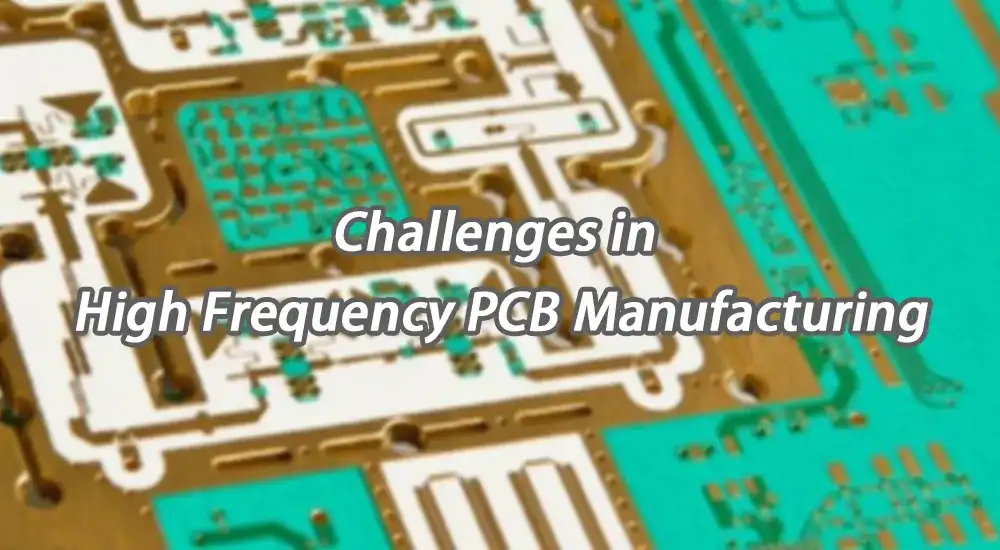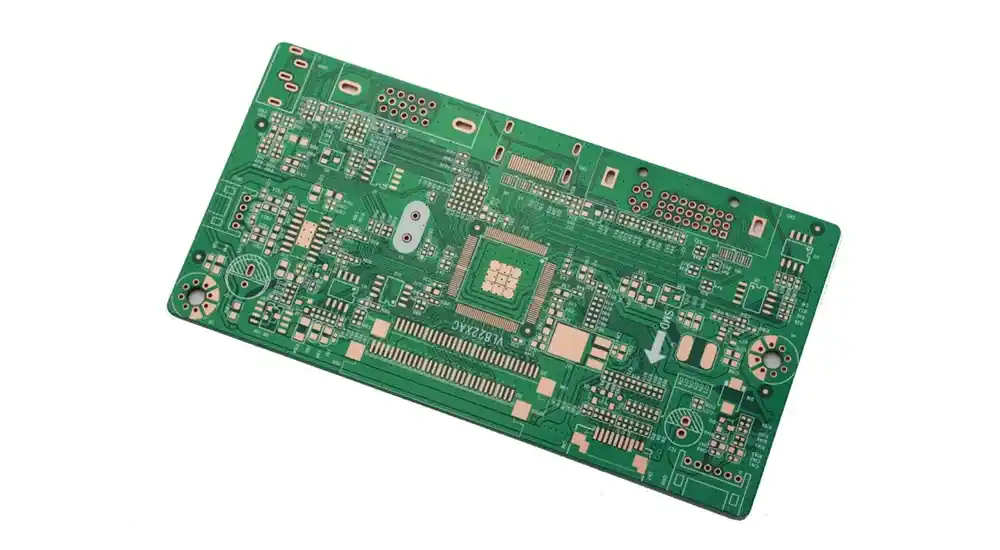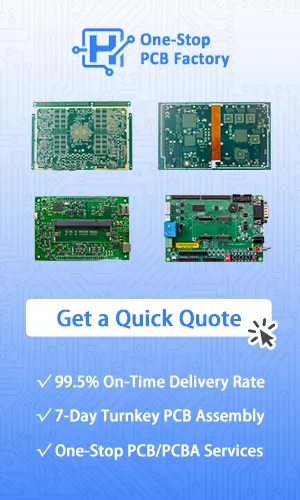
High Frequency PCB Manufacturing is essential for modern electronic systems that operate at ever-increasing signal speeds. Applications such as 5G telecommunications, automotive radar, satellite communications, and advanced IoT devices now rely on circuits operating well beyond 1 GHz, reaching into the millimeter-wave spectrum. As frequencies climb toward 100 GHz and higher, traditional PCB manufacturing methods encounter significant technical limitations. Maintaining signal integrity and overall system performance at these high frequencies requires a complete rethinking of materials, design strategies, and fabrication precision.
Moving from low-frequency to high frequency applications is not just a matter of scaling—it introduces new physical effects that conventional PCB design rules can no longer manage. Trace dimensions become comparable to signal wavelengths, electromagnetic interference increases, and previously minor material characteristics become critical to performance. High frequency PCBs demand an integrated engineering approach that addresses these emerging challenges from the ground up.
High Frequency PCB Materials: Critical Selection Criteria
Dielectric Properties and Loss Characteristics
Material selection plays a fundamental role in the success of High Frequency PCB Manufacturing. As signal frequencies reach into the GHz range, especially in applications such as RF communication, satellite systems, and 5G infrastructure, the choice of substrate materials directly impacts signal integrity and overall performance.
While standard FR-4 may be suitable for digital circuits below 1 GHz, it introduces excessive signal loss and impedance variability at microwave frequencies due to its high dissipation factor (Df) and inconsistent dielectric constant (Dk).
To meet the demands of GHz-level signal transmission, high frequency PCB materials must offer a combination of electrical stability, thermal reliability, and manufacturability. The ideal substrate for high-speed and high frequency designs should exhibit the following characteristics:
- Low dielectric loss tangent (tan δ < 0.004) to reduce signal attenuation across transmission lines
- Stable dielectric constant (Dk) across broad frequency and temperature ranges to ensure impedance consistency
- Low moisture absorption to avoid shifts in electrical properties during operation in humid environments
- Consistent thickness tolerance (±0.0005″) to maintain controlled impedance and minimize signal distortion
- Low coefficient of thermal expansion (CTE) for dimensional stability during thermal cycling and multilayer lamination
Substrate Selection Criteria
In High Frequency PCB Manufacturing, choosing the right substrate involves carefully balancing electrical performance, thermal management, mechanical stability, and cost.
Different material systems offer trade-offs that must be considered based on the application’s frequency range and complexity. For instance, PTFE-based PCB materials are favored for their outstanding dielectric performance at microwave and millimeter-wave frequencies, but they pose fabrication challenges due to their low surface energy and mismatched coefficient of thermal expansion (CTE) with copper.
Hydrocarbon ceramic substrates offer a practical alternative by combining good electrical characteristics with improved processability, making them suitable for high-volume RF and 5G PCB production. These materials support impedance consistency and thermal reliability in demanding GHz-level environments.
To further optimize performance in high frequency designs, advanced substrate systems now incorporate features such as:
- Spread glass weave patterns to reduce differential pair skew and improve signal timing
- Low-profile copper foil to minimize surface roughness and reduce conductor loss
- Thermally conductive fillers that enhance heat dissipation for power-intensive RF circuits
- Dimensional stability additives to improve CTE matching and maintain multilayer alignment
High Frequency PCB Design Challenges and Techniques
Impedance Control and Signal Integrity
In High Frequency PCB Manufacturing, achieving reliable signal performance depends heavily on precise impedance control and layout optimization. At gigahertz frequencies, transmission line effects dominate signal behavior, and even small layout variations can lead to significant signal degradation. Unlike low-frequency designs that allow ±10% impedance variation, high frequency circuits often require tighter tolerances within ±5% to maintain signal integrity.
To meet these stringent requirements, designers must treat every trace as a controlled impedance element and apply advanced routing techniques. Key design practices include:
- Differential pair routing with tight coupling to minimize common-mode noise and timing skew
- Via stitching at intervals of λ/10 to preserve consistent ground return paths
- Microstrip versus stripline routing based on specific needs for radiation control and crosstalk suppression
- Optimized bend radius (at least three times the trace width) to reduce signal reflection at corners
- Guard trace implementation to shield sensitive analog or RF signal paths
Via Design and Layer Stackup Optimization
Vias are a critical factor in High Frequency PCB Manufacturing, as traditional through-hole vias introduce unwanted parasitic inductance and resonant stubs at high frequencies. These effects become especially problematic in multi-gigahertz designs. To overcome these challenges, advanced via technologies are commonly used:
Blind and Buried Vias: These vias connect only specific layers, eliminating unnecessary stubs and reducing via inductance by up to 60% compared to through-hole vias.
Microvias: Laser-drilled vias with diameters as small as 50–100 μm enable low-inductance signal transitions and are essential for high-speed digital and RF multilayer stackups.
Via-in-Pad Technology: This technique allows for high-density BGA routing by placing vias directly under component pads, reducing path lengths and parasitic capacitance.
Layer stackup design also plays a crucial role in signal integrity, power delivery, and manufacturability. Effective stackup strategies for high frequency boards include:
- Symmetrical layer construction to avoid warpage during lamination
- Controlled dielectric thickness to ensure impedance targets are consistently met
- Strategic placement of power and ground planes to enhance shielding and reduce loop inductance
- Mixed dielectric systems that balance electrical performance with manufacturing cost

Precision in High Frequency PCB Manufacturing
Precision Fabrication Requirements
High Frequency PCB manufacturing requires extremely tight process tolerances and advanced equipment capabilities to ensure signal performance at GHz-level speeds. Compared to standard PCB processes, critical dimensions and surface finishes must be much more controlled to maintain signal integrity and impedance consistency.
Etching Precision: Impedance control in high frequency PCBs depends on line width and spacing tolerances within ±12.5 μm (±0.5 mil). Advanced etching techniques using alkaline chemistry and temperature-controlled processes minimize sidewall variation and conductor loss.
Microvia Drilling Accuracy: Laser drilling for high frequency PCB microvias must achieve positional accuracy within ±25 μm. Multi-pulse laser systems are used to avoid resin smear, reduce tapering, and support consistent copper plating in fine geometries.
Copper Plating Uniformity: Maintaining uniform copper thickness—typically within ±10% across the board—is essential for reliable impedance matching. Pulse plating technologies and real-time thickness monitoring enhance plating control in high frequency PCB production.
Surface Finish Selection: In high frequency PCB applications, traditional HASL is unsuitable due to uneven finish and poor signal performance. Preferred finishes include:
- ENIG (Electroless Nickel Immersion Gold) – Offers excellent wire bonding and corrosion resistance.
- OSP (Organic Solderability Preservative) – Minimizes surface roughness for low signal loss.
- Immersion Silver – Provides a flat, conductive surface for high-speed signals with good solderability.
Advanced Testing and Quality Control
Unlike standard boards, high frequency PCB manufacturing incorporates high frequency testing to ensure signal integrity across RF and microwave bands.
Time Domain Reflectometry (TDR): Verifies impedance control along transmission lines, identifying impedance discontinuities as small as 2 to 3 ohms.
Vector Network Analysis (VNA): Evaluates key RF performance indicators including insertion loss, return loss, and crosstalk from DC to 67 GHz or higher.
Differential Skew Testing: Confirms matched propagation delays in differential pairs. In high-speed digital applications, skew tolerance must be below 1 picosecond to prevent timing errors.
Modified In-Circuit Testing (ICT): High frequency ICT fixtures are specially designed to preserve signal quality while performing component-level testing.
Thermal and Environmental Considerations in High Frequency PCB Manufacturing
Heat Dissipation Strategies
High frequency PCBs generate significant heat due to conductor and dielectric losses as well as power dissipation from active components. Effective thermal management is essential to ensure both reliable performance and long-term durability in High Frequency PCB Manufacturing.
Thermal Via Arrays: Strategically placing thermal vias beneath power-intensive components creates efficient heat transfer pathways to internal ground planes or external heat sinks, helping to dissipate heat quickly and evenly.
Metal Core PCBs: For high-power RF and microwave applications, metal core substrates—typically aluminum or copper cores with specialized dielectric layers—offer superior thermal conductivity while maintaining electrical isolation.
Embedded Cooling: Advanced High Frequency PCB designs may integrate microfluidic cooling channels or embedded heat pipes to address extreme thermal management requirements in demanding environments.
Environmental Stability Requirements
High Frequency PCB Manufacturing must ensure circuit performance remains stable across diverse environmental conditions. Key factors include:
- Temperature cycling resistance to prevent copper fatigue, delamination, and mechanical stress failures
- Humidity absorption control to preserve stable dielectric properties and prevent signal degradation
- Chemical resistance for PCBs used in harsh industrial or outdoor environments
- UV stability especially important for outdoor or aerospace applications exposed to sunlight or space radiation
Accelerated aging tests simulate years of operational stress by combining temperature cycling, humidity exposure, and electrical loading, validating the long-term reliability of high frequency PCBs under real-world conditions.
Advancing High Frequency PCB Manufacturing Excellence
The challenges in High Frequency PCB Manufacturing continue to evolve as applications move toward higher frequencies and greater integration densities. Achieving success demands a holistic approach that combines cutting-edge materials science, precision fabrication techniques, and thorough design validation to ensure optimal electrical performance.
At Haoyue Electronics, we specialize in high frequency PCB manufacturing and assembly, leveraging advanced material expertise, state-of-the-art fabrication equipment, and rigorous quality control processes. Our engineering team works closely with customers to optimize designs for manufacturability while meeting stringent electrical and reliability requirements. From prototype development through high-volume production, we deliver the precision and consistency that complex high frequency applications require.
For your next high frequency PCB project, choose a manufacturing partner who understands the technical complexities and has the capabilities to deliver outstanding results. Contact our engineering team to discuss how Haoyue Electronics can support your high frequency PCB design and manufacturing needs.

